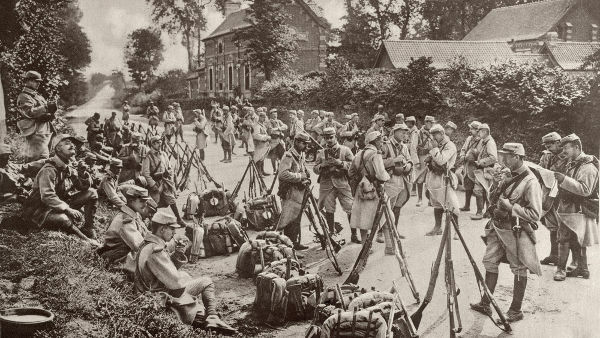The European continent suffered terribly from the First World War. War has always been synonymous with the strongest expression of pain, as it reaps, ruins, destroys lives, families, everything in its path. More than twenty million people died in this conflict, the economy stalled and created chaos inflation, large epidemics occurred, there was a decrease in food production and, consequently, hungry. A society in times of war undergoes many and severe transformations.
From this scenario, women were observed in another way. They, historically repelled to a socially reduced role, came to stand out as propellants of a decadent society, where men left their families, homes, homeland, to go to the “front”. At this moment, the liberation of women and the decline of family and Christian prestige were followed at a slow pace. A new model of marriage has appeared.
When the man returned from the war, his behavior greatly changed in the family context, he began to participate more in household chores. And the woman, in taking charge of work positions outside the home, while the men were away, learned the functions of labor market acquiring a certain economic independence that led them to claim the same rights as men had.
Social life was limited. The beautiful spectacles practically disappeared, with that the women's fashion became less elaborate and consequently less decorated. Faced with radical changes and a hopeless scenario, women sought to fulfill their dissatisfactions, afflictions, through concern with their physical appearance and changes in clothing female.
Many of the new occupations with work required uniforms, including pants. Thus, a militaristic vision invaded fashion costumes such as military-style jackets, belts and visors. The stylists were inspired by the moment in which they lived. In this context, we can say that Europe lived days of great creative spirit in the fashion world. Many innovative styles were born from this critical landscape, such as the young woman Gabrielle Chanel, More known as "Coco Chanel".
At that time, the corset was left behind and was replaced by the elastic strap, the amount of fabric in the clothing decreased due to the lack of raw material and the fact that a large part of the factories were closed due to the war. So there were adaptations in women's clothing. Clothes became shorter, pants looser; the skirts and coats, straight. In 1915 the height of the skirts was just above the ankles.
Do not stop now... There's more after the advertising ;)
The hats had shrunk in size and were lightly decorated, very discreet. These hats became fashionable and came to be called “cloche” hats; specially created to accompany the short hair and hairstyles that were in fashion "la garçonne". This model accentuated a sporty and practical style. In makeup, the trend was lipstick. The mouth was crimson, in the shape of a heart. The makeup was heavy on the eyes, the eyebrows removed and the line painted in pencil. The purpose of the makeup was that the skin was very white.
The neutral colors and the black color predominated in the war years, contrasting with the pitiful scenario of the war, a sign of hopelessness, desolation and death. Interesting facts occurred during the period, such as the publication of fashion magazines featuring models of mourning clothing in full pages. Several fashion shows were organized to raise funds for the war effort as well as the unprotected and refugees.
We can say that life has become simplified and has not stopped. That means that "The First World War" devastated and at the same time innovated the fashion world. The war brought scarcity, simplicity and severity to the population and, naturally, it affected beauty and fashion. The history of fashion has always been linked to social transformations, distinguishing class, age, moment. Consequences of a time where disorder reigned.
By Lilian Aguiar
Graduated in History
Brazil School Team
Would you like to reference this text in a school or academic work? Look:
AGUIAR, Lilian Maria Martins de. "The transformations of fashion that took place in Europe with the First World War"; Brazil School. Available in: https://brasilescola.uol.com.br/historiag/as-transformacoes-moda-ocorridas-na-europa.htm. Accessed on July 27, 2021.

